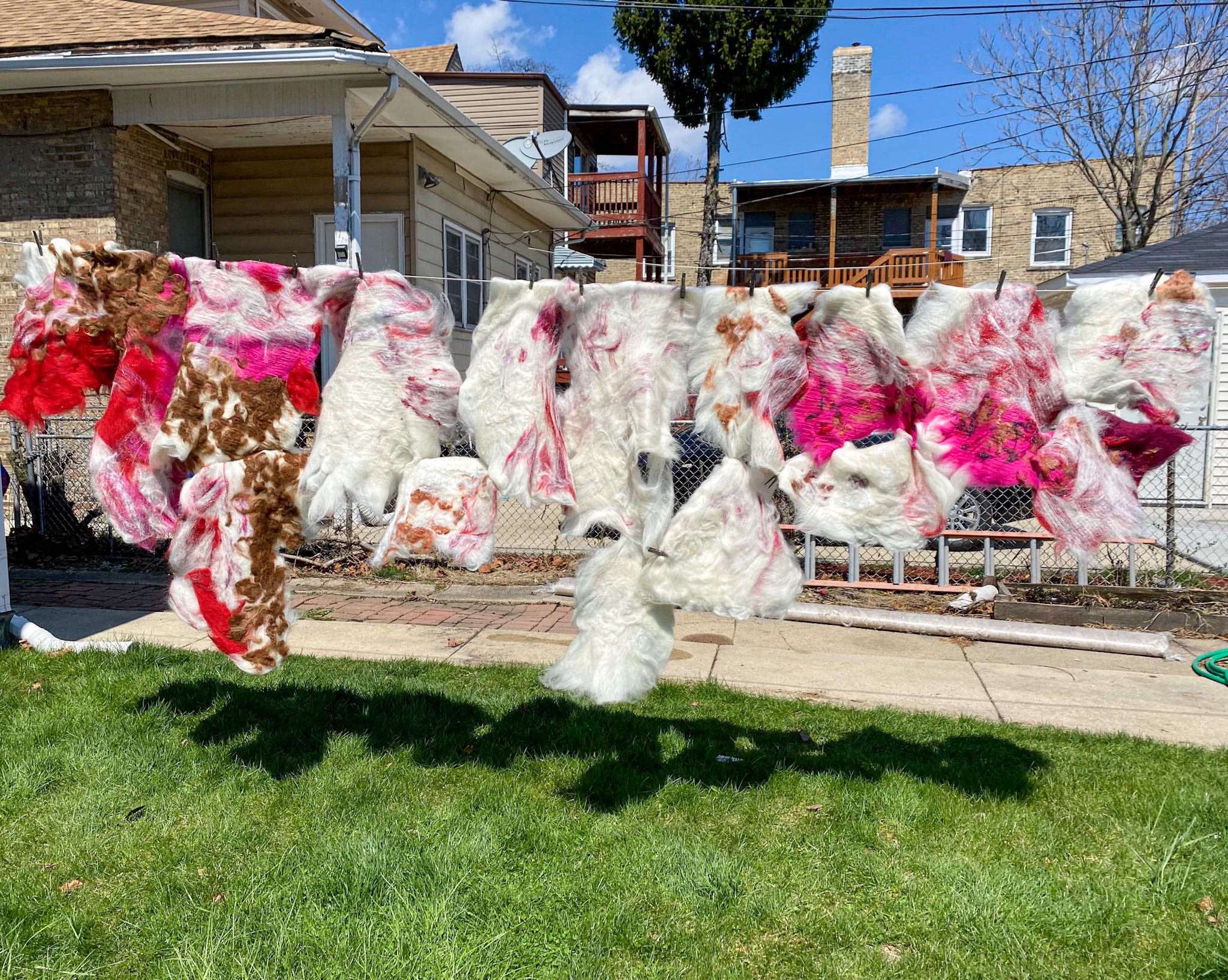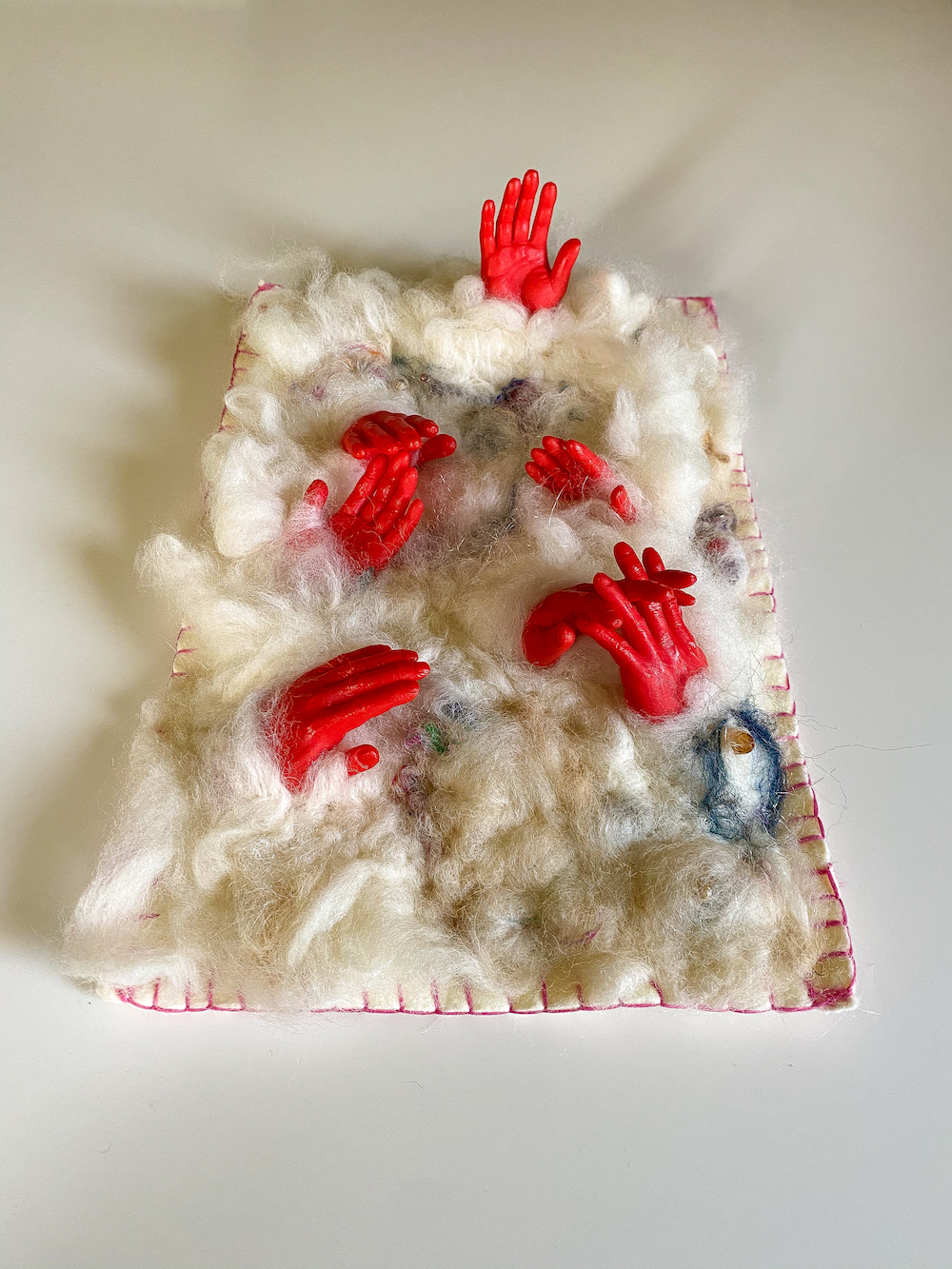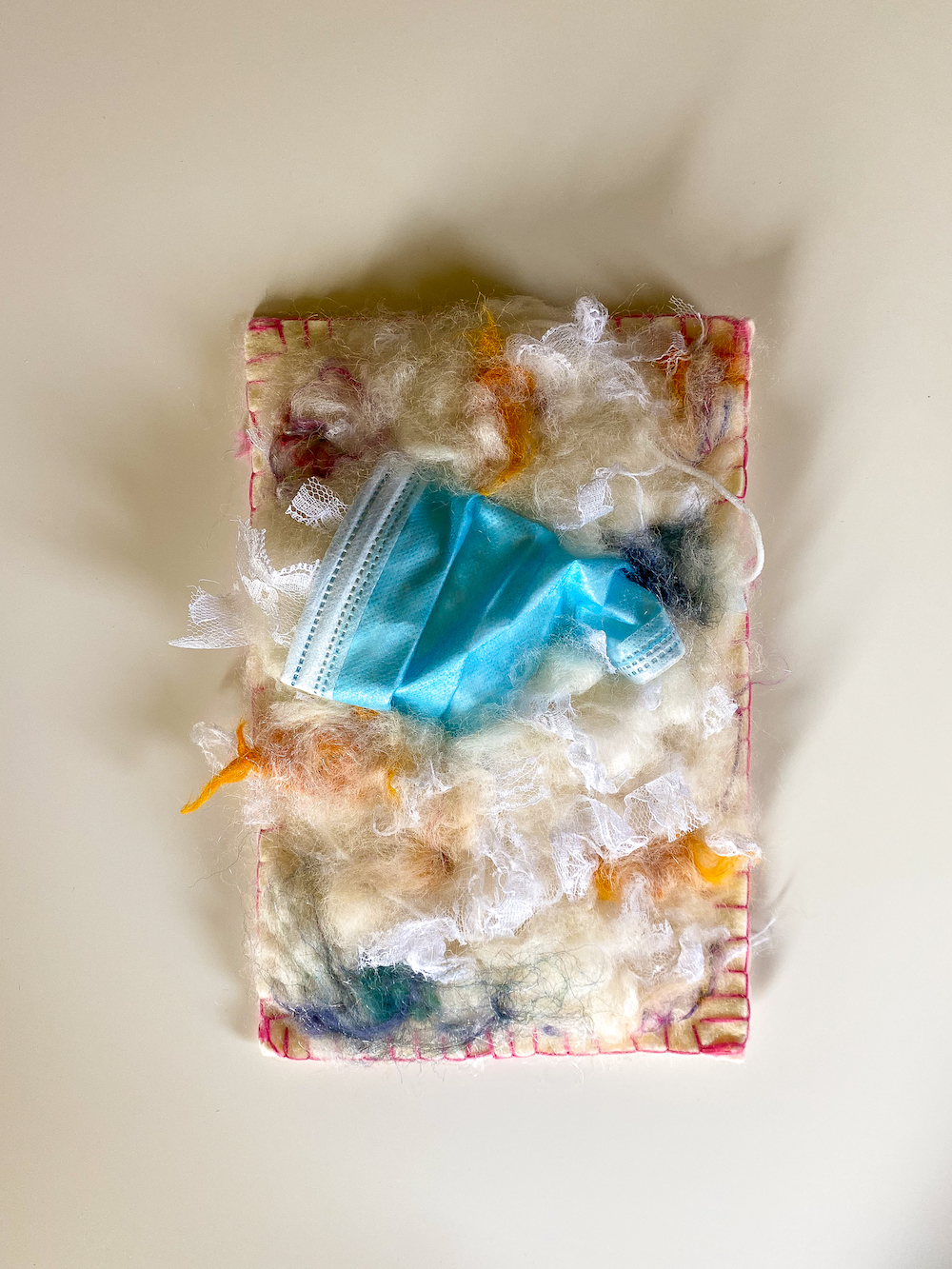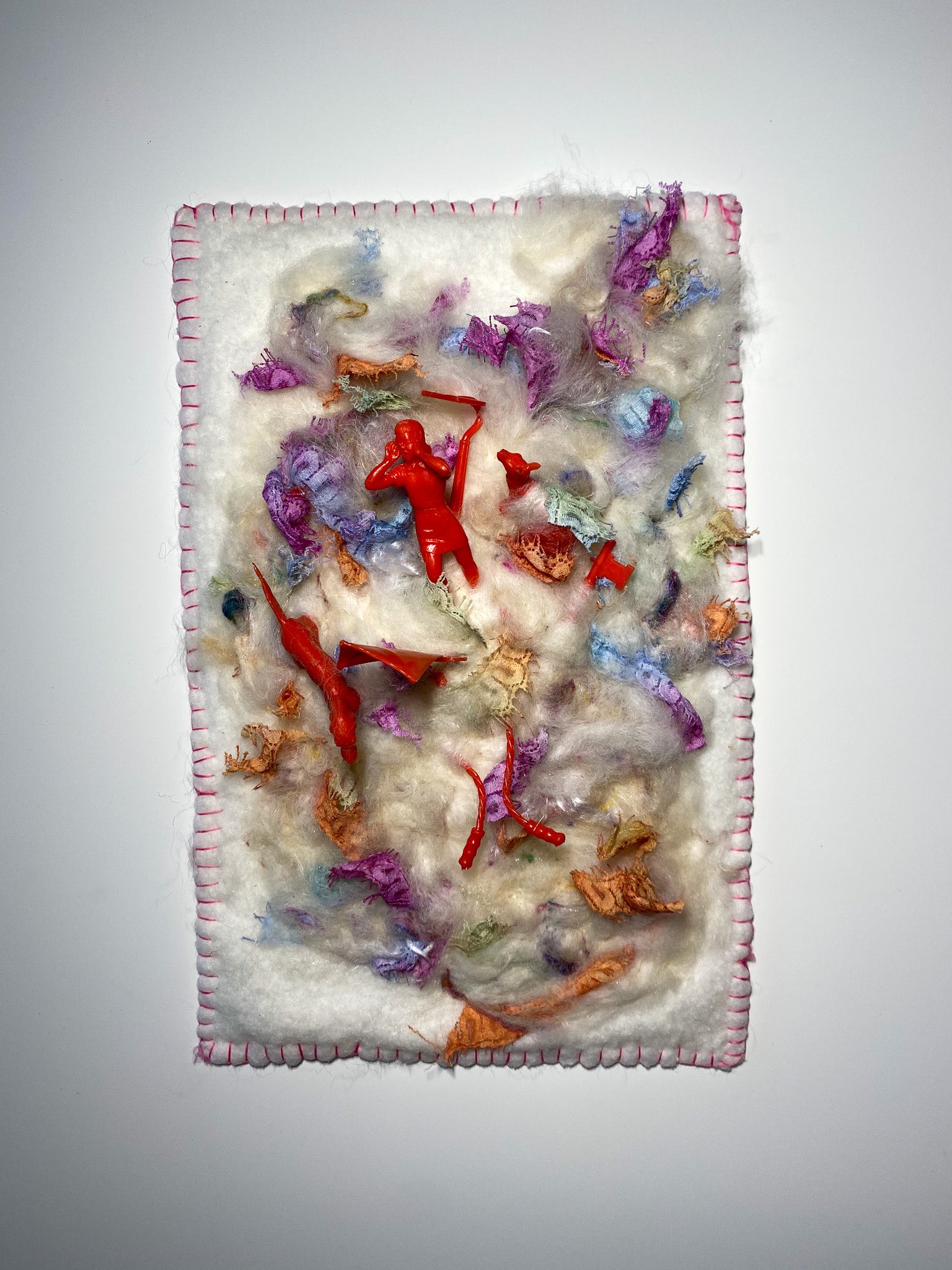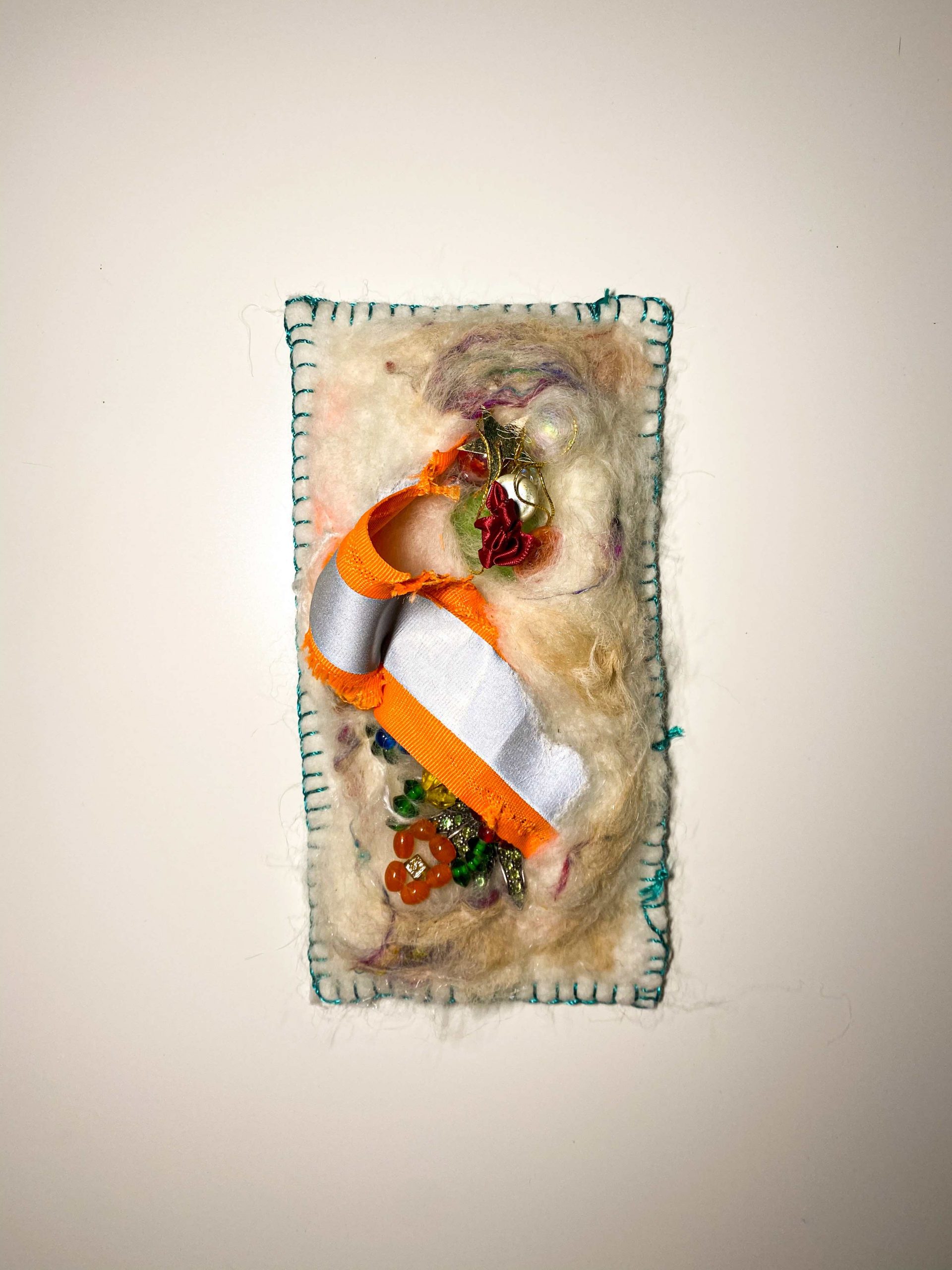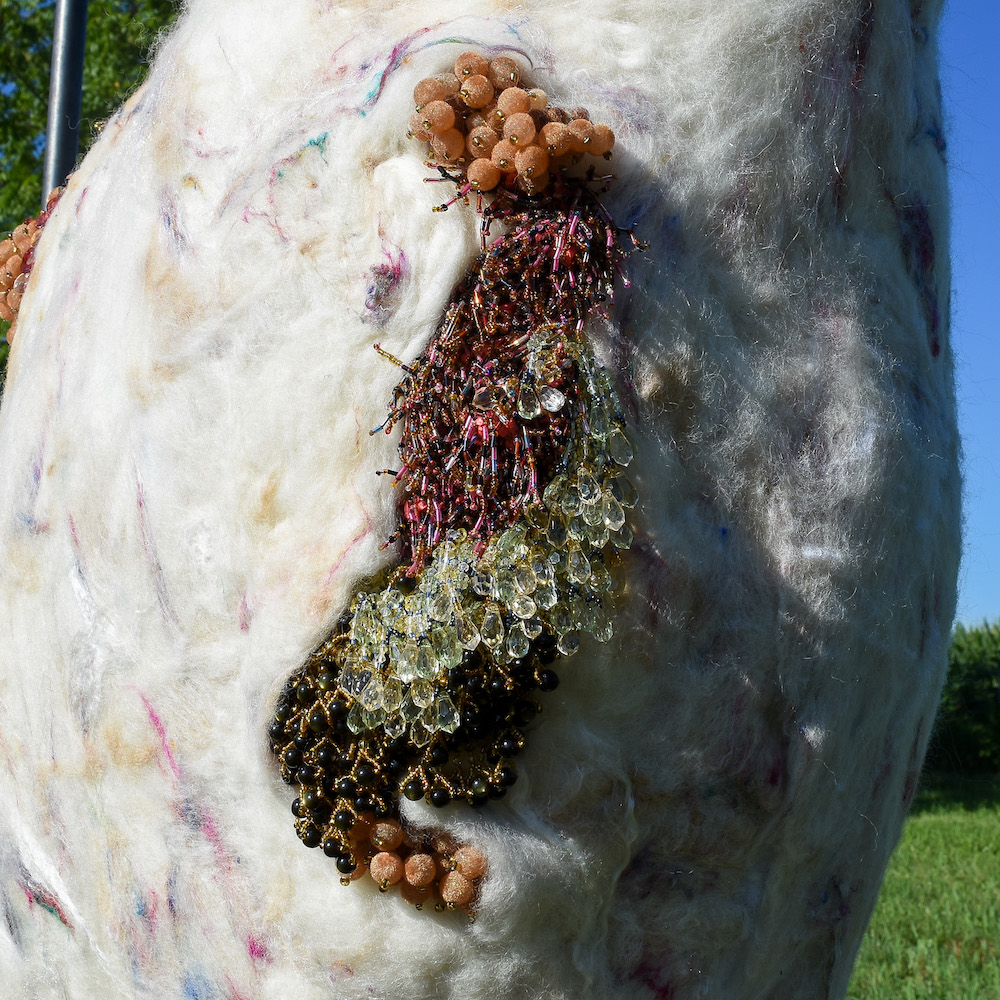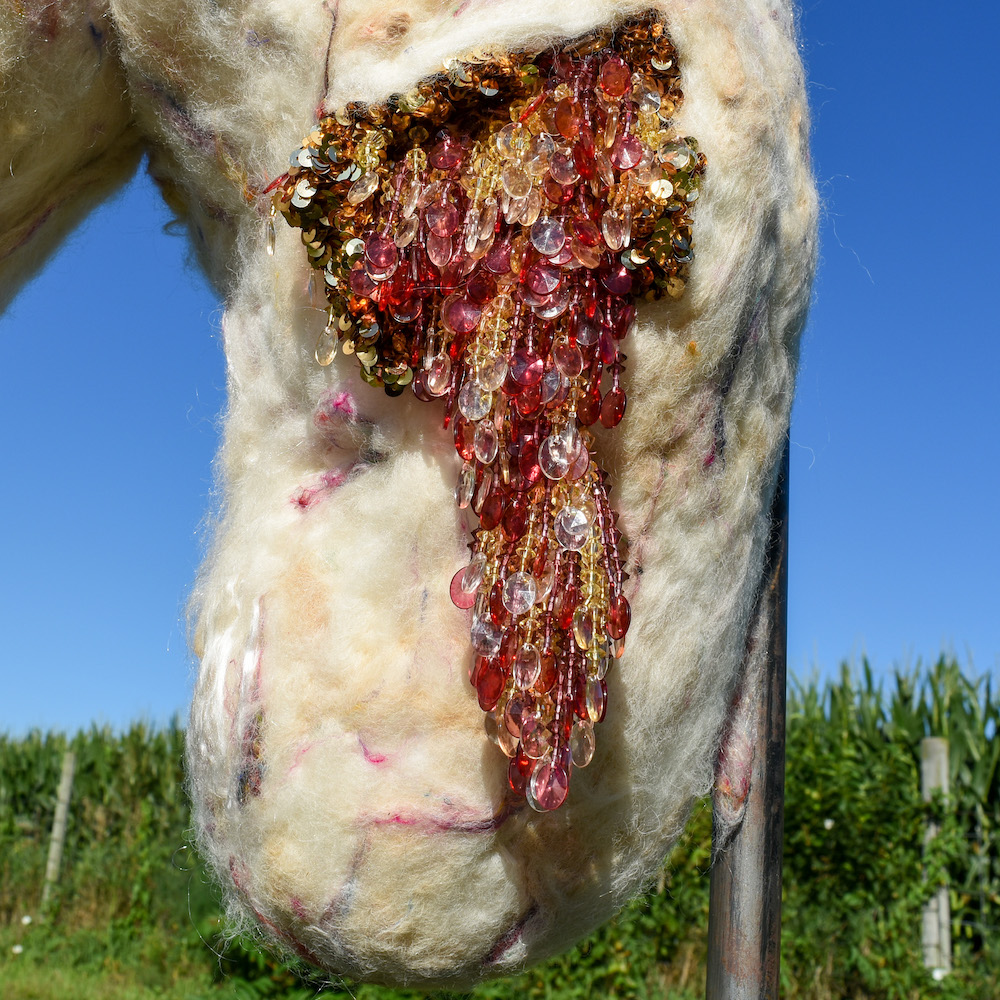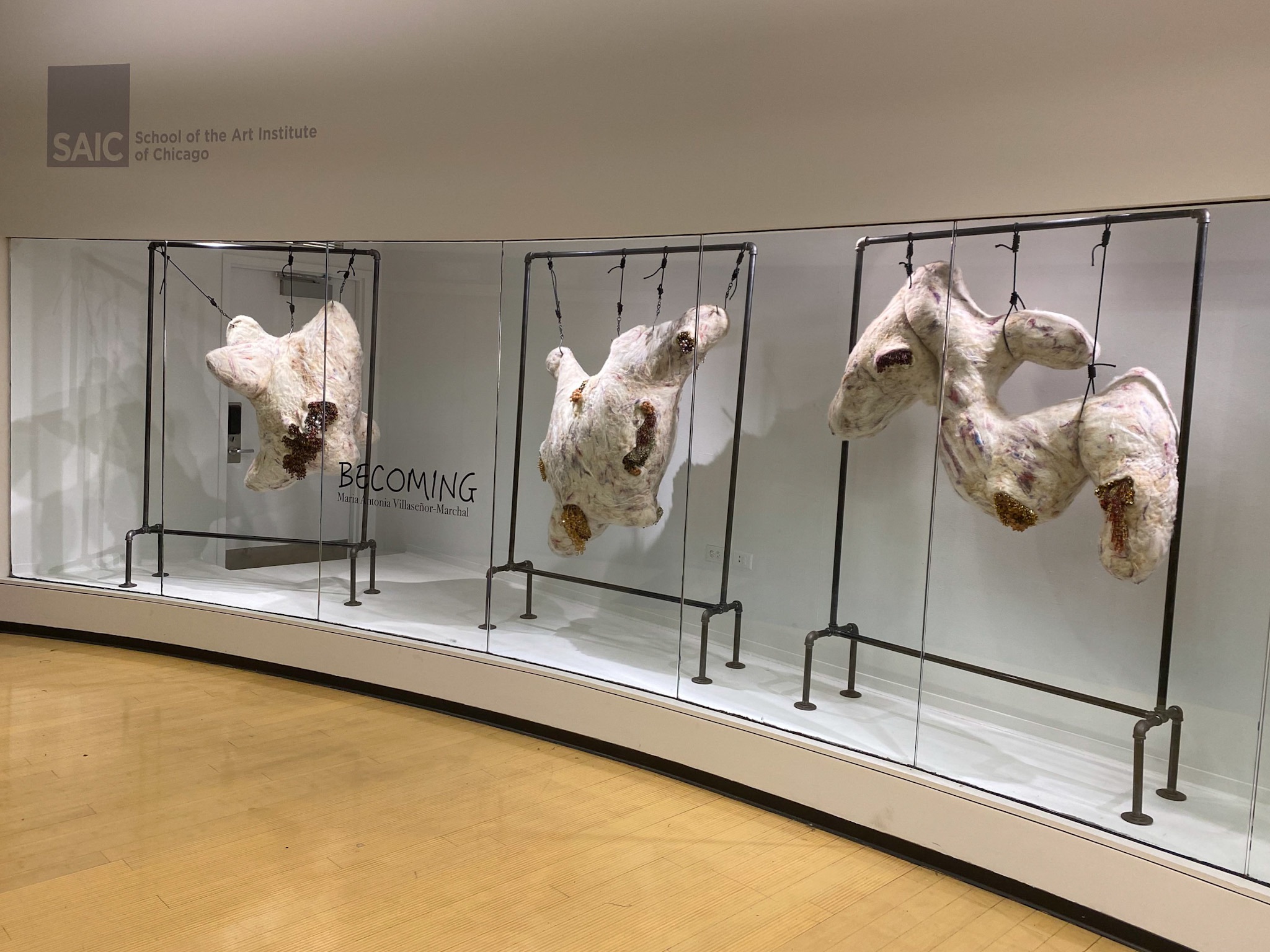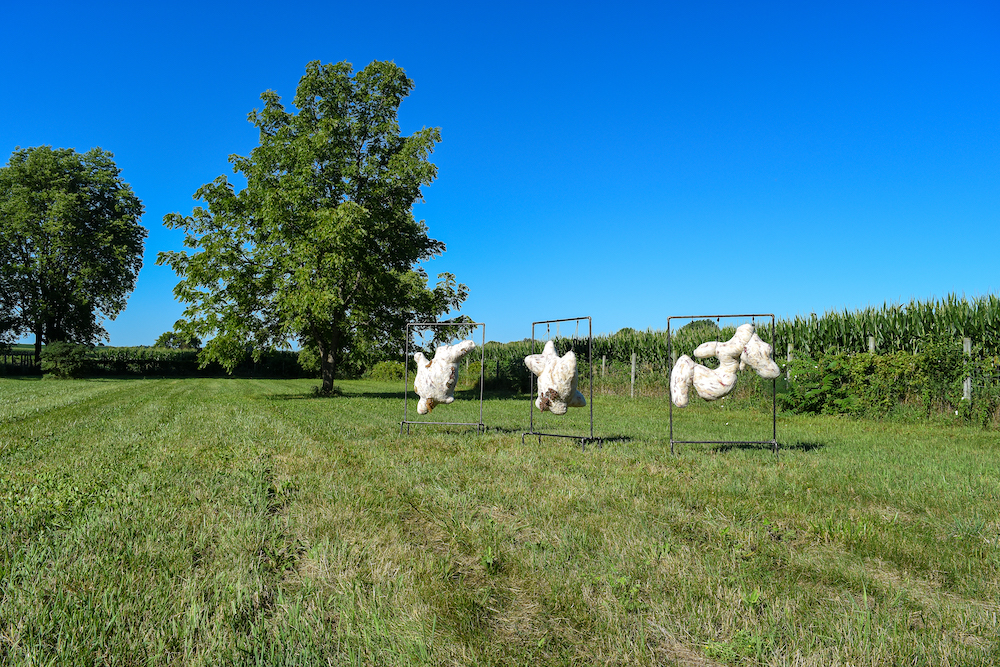Thesis Defense Statement:
Through my time at the School of the Art Institute of Chicago, my work has evolved in three major stages: form, material and purpose. In her article “Felt Matters” (2010), Jeanne Vaccaro describes the process of a body that is becoming in which matter and experience builds and allows for an individual to grow and construct their own ideas of being, thus creating their own person. I have come to identify strongly with this sentiment during my time as a graduate student and in the process of my transition. However, this idea radiates beyond the individual and has therefore allowed me to build my education and experiences into a body of work that speaks not only to my personal journey, imagination and aesthetics, but to address concerns impacting the world today.
During my first year of graduate school, my courses and studio work focused on the development of knowledge and skills that are essential to all designers. Through my art history coursework, I gathered the philosophy, language, and history behind work that I had always enjoyed but did not fully understand. Now this work holds meaning and relevance to my own sense of aesthetics and to the art that I make. In particular, Edouard Glissant’s writing “Opacity” (1990) showed me how to present my work in a way that connects with viewers while still protecting myself and my own story. Abstraction facilitates this process in that it unites us in our differences.
The first year was also important in developing technique, which for me manifested in my being taught how to take two-dimensional shapes that I saw in mind and turn them into three-dimensional forms. Going from flat to form allowed me a perspective and a presentation that I had not previously believed possible. This is now represented in my sculptures which, while in some senses soft, stand resolutely in their ability to occupy space and to have agency through their interactions with viewers.
In my second year, I was able to establish my voice in the form of material language. Through the felting of animal fibers, I have been able to create textiles that are completely freestyle. They have no warp and no weft. They move beyond restrictive, gridded lines and into a realm where I can paint my fibers into textiles that are imbued with my own story, perspective, and aesthetics but manifested in a completely abstract way. Furthermore, in my use of animal fibers that are indigenous to the Western Hemisphere, I remain consistent in my commitment to both the decolonization of material and to the creation of a sustainable practice. While this is represented throughout all of my work, the tapestries serve as a moralistic tale of sustainable art marking that is in collaboration with nature.
Finally, my work on the series of miniatures documents a daily intake of life and making in the time of COVID-19. The world has been forced to slow down. We, as a species, have failed to listen to what the earth was telling us. So, it is finding ways to make us listen, by making us rethink and reorient how we live. In the miniatures, the natural fibers are enveloping and overgrowing the objects embedded within the pieces. This highlights a process of mending, of healing, and of cherishing the things that are most important to us.
My thesis work shows a commitment in two ways. First, it is a personal narrative of the process of mending trauma. This is relatable to many who have experienced hardship and have persevered. Second, it speaks to our collective need to live more compassionate and sustainable lives. We can no longer afford to be ignorant or entitled in our relationship with the earth, and with each other. We must make great changes in order to mend, to grow, and to survive as a planet.
